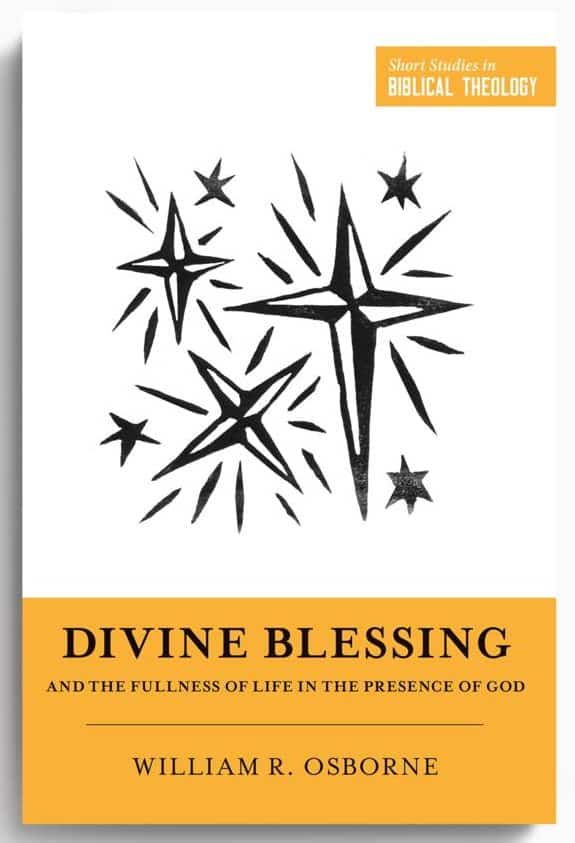CHAPTER 1
Blessing and Curse, Life and Death
When I was growing up, I spent many weeks of the summer riding my bike in a church parking lot, and it didn’t take long for boredom to cause me to begin looking for scrap pieces of wood to build a ramp. My early engineering experiments in ramp building taught me rather quickly that trajectory (a term I didn’t know at the time, but a concept I became painfully familiar with) was a critical component of determining where and how one lands. With many scrapes and bruises, I started to see that where and how you take off has everything to do with where you end up.
The same is true for biblical theology. We must first direct much of our attention to building a proper understanding of God’s design for his world if we are going to understand how the biblical story unfolds.
The first three chapters of Genesis are critical territory for any biblical-theological discussion. In fact, they serve as the foundation of what is often called a “biblical worldview.” That is, they begin the universal story of the world that answers fundamental questions like: Who are we? Where did we come from? How are we to live? What is wrong with the world? And how can it be fixed?
This story unfolds in the opening chapters of Genesis, revealing God’s initial design, or the divine blueprint, for all of creation. Graeme Goldsworthy calls this “the pattern of the kingdom”—namely, all of creation existed in perfect relationship with its sovereign king.
However, anyone familiar with these first chapters knows that this perfect relationship does not last long. God’s good world is quickly marred by human rebellion. Genesis 1–3 sets us on a trajectory of understanding God’s original design of giving abundant life to be experienced in his presence, and the tragic consequences of cursing that followed humanity’s chafing against that design.
God Creates to Give Life
The Bible begins with God’s existence as a foregone conclusion. God’s origins are not defined, defended, or discussed. Old Testament theologian Ludwig Köhler was right when he stated, “The assumption that God exists is the Old Testament’s greatest gift to mankind.”
So, we begin with that gift—God exists and is the source of everything else that comes into existence. Interestingly, these are the very ideas associated with God’s self-revelation of his name to Moses in Exodus 3:14: “I am who I am” (ESV). He is the one who exists and acts on behalf of his people.
God’s very nature is Trinitarian, relational, eternal, and outward oriented, and because of this, creation came into existence by the word of God as an overflow of his character. Consequently, God’s creating is inseparably tied to his blessing, as we see in the first chapters of Genesis.
Creation and Blessing Living Creatures
Genesis 1 describes God’s creative power as he calls forth light and darkness, earth and sky, and even celestial bodies. The world that was once “without form and void” (Genesis 1:2 ESV), is shaped and prepared for the habitation of life, and ultimately human life. The living God is the life-giving God. On day five of the narrative (Genesis 1:20–21), God creates sea creatures great and small, along with the birds of the air.
It is during the events of day five that we are introduced to the notion of divine blessing for the first time in the Bible. After God witnessed the goodness of what he had made, the text says, “And God blessed them, saying ‘Be fruitful and multiply and fill the waters in the seas, and let birds multiply on the earth’” (Genesis 1:22 ESV). God’s blessing conferred his design and intent over his creatures.
In this way, the divine blessing serves as an extension of God’s creative activity. The act of pronouncing a blessing in Genesis 1:22 looks like God commanding his creation to “be fruitful,” “multiply,” and “fill” within the context he created them. James McKeown writes, “In this context [these verbs] are used together to give maximum prominence to the concept that the creator’s blessing would lead to a world teeming with life.”
We will see that these verbs reappear through the book of Genesis (Genesis 1:28; 8:17; 9:1, 7), providing thematic cohesion to the narrative of God’s plan to bless the world.
Creation and Blessing Image-Bearing People
As important as this first divine blessing is, day six presents the pinnacle of God’s creative, life-giving project. After creating land animals according to their kinds, we are told that God created mankind in his image (Genesis 1:24–26). In verses 1:27 and 28, as in 1:21–22, there is a close connection between God’s work of creation and his blessing:
“So God created. . . . And God blessed.” While it is true that the creation account is always progressing toward its Sabbath-resolution, according to the narrative structure, the creation of humanity stands at the highest peak of the story’s terrain. The creation of human life stands out against the origin of fish and animal life because God created humanity in his image, and he blessed them. What does this often used yet enigmatic phrase, “in his image,” mean?
- Humanity was to have a certain kind of life, one that reflected its Maker by exercising dominion and authority as his vice-regents.
- His image bearers were to reflect their Maker’s reign in the world over all other living things, thereby giving glory to their Creator.
- As those co-reigning with their Maker, humanity was to have a unique relationship with God. From the moment of creation, what it means to be human can only ever be understood in proper relationship to God.
- And humanity shares spiritual characteristics with God. Genesis 2:7 speaks of God taking the man from the ground and breathing the “breath of life” into his nostrils. This is a profound picture of God’s life-giving breath to the first human being.
As he did with the sea creatures on the fifth day, God also declares a blessing over humanity in Genesis 1:28, which is often referred to as the cultural mandate. After the climatic declaration that humanity will bear his image (Genesis 1:27), the text says, “And God blessed them. And God said to them, ‘Be fruitful and multiply and fill the earth and subdue it, and have dominion over the fish of the sea and over the birds of the heavens and over every living thing that moves on the earth’” (ESV).
The divine plan is that God’s image bearers fill the earth, exercising authority and dominion over the earth, with the result that the earth is filled with the image and glory of its Creator.
As we saw in 1:22, God’s blessing is a spoken word given to his people. McKeown notes that the words “to them” are included in verse 28 but excluded in the blessing of the sea creatures and birds, indicating in that while “God blesses other creatures, it is the blessing on the humans that reflects the more intimate relations.”
The blessing of Genesis 1:28 also encompasses multiplication and fertility just like the blessing spoken over the sea creatures and birds. While this notion of blessing may feel culturally distant from us in the twenty-first century, fertility and procreation are central features of divine blessing, especially in Genesis. The fulfillment of God’s blessing in 1:28 requires the one-flesh union of the man and the woman that we read about in 2:21–25.
However, as we will see, the themes of fruitfulness and multiplication extend beyond Genesis and provide a narrative cohesion to the story of Israel. God’s blessing of humanity is directly tied to mankind’s function as his image bearers. The divine plan is that God’s image bearers fill the earth, exercising authority and dominion over the earth, with the result that the earth is filled with the image and glory of its Creator.






